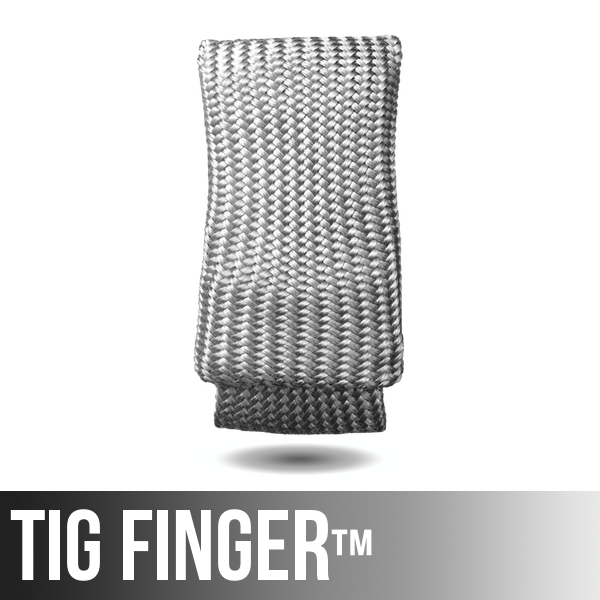Video Transcript
Mig Welding Outside Corner Uphill Downhill
Today, we’re gonna be doing some outside corner joints in quarter-inch thick. That’s roughly six millimeter thick cold ruled steel. Vertical uphill, also will be doing a little bit of downhill. For starters, here’s our settings. Without any gap, quarter-inch steel going uphill. We’re gonna take our little run at this and this is basically the pattern, gonna be kind of tracing the front edge of the puddle so that we make sure to get penetration all the way down into the root of the joint.
That’s looking pretty good as we go here but we’re gonna see, as soon as I stop, a little bit of an issue with some undercut, on one side, mainly. On that left hand side we got a little undercut, so I’m either not holding long enough there or actually it’s just a little bit tough to get penetration and not leave a little undercut. So, I’m gonna turn the machine down just a little bit, gonna tweak it just a little bit. Go down to about 17.4 volts, and down to just a little bit lower on the wire feed speed down to around a 170-ish. That should be a little bit better. So, we’re gonna try that now, same exact technique, trying not to go too far over the corner, and we’ll see what happens there. It looks like things are flowing pretty well, all the way down into the root of that joint. Again, I’m tracing the front edge of the puddle with sort of an upside down V, and I got just a tiny bit of undercut there, a lot better.
Now I’m gonna shift gears a little bit, and I’m gonna do a two-pass weld here on this outside corner joint just to see what happens. We’re gonna do a cutting edge, a test at the end of this on both joints. Wanna do a downhill root pass here and then up uphill cover pass. So I’ve got it much hotter for the root pass, and I’m gonna stay right at the front edge of that puddle. I’m gonna point the wire right up into the very front edge, and kind of quite a bit of a drag angle. Then I’m going to come uphill. Now, I can’t run it as hot going uphill, just won’t be controllable. There’s just nowhere for the metal to bite onto and there’s not much area for it to fill so I’m gonna set it down quite a bit cooler than what I did for that root pass, and run an uphill cover pass. Doing just Z-weave technique, just pausing on the edges, and kind of moving, not spending a whole lot of time across the middle. Just pausing momentarily on the edges, taking roughly one second to go from edge to edge.
That worked out pretty well. But what we’re gonna do now is we’re gonna let everything cool off on both of these joints, and we’re gonna do a little cutting edge here, to compare the difference in penetration. You can see the penetration side there where things were gapped going downhill. It punched it in there pretty good. This is a Metabo 6-inch grinder. It is no joke. If you wanna do some quick cutting-edge samples like this, this makes quick work of it. You could use a Portaband, you can use pretty much anything, but this is really quick.
So, I’m gonna cut out little chunks out of both little samples like this and we’re gonna do a little comparison here. I’m wanna cut an edge just to see the difference in the cross-sectional thickness of the weld. Now, that’s with the open groove or the, I should say, open corner joint. It really punched through there, and if we measure that, if we measure the thickness of the base metal, it’s a quarter-inch, a little more than six millimeters thick, and then we measure the cross-sectional thickness of the weld, see that the weld is a good bit thicker. It’s a little bit over 3/8 inch thick.
That’s a good thing. That means I’ve got a pretty much a full strength weld there. Now, this is the without a gap here, just welding with a single pass. The thing that really jumps out at me here that didn’t jump out at me at first because I was so focused on looking at the weld to see if it got penetration that I really didn’t even notice that straight line indication there until after the fact, while I was editing the video. It appears to be a lamination. You generally do not want to see a distinct straight line in any inspection of a weld or metal.
You would like to think that metal is pretty much defect-free but that’s just not always the case. So, the AWS defines a lamination as a discontinuity or separation of metal generally aligned with the working surface of a metal. So, this was worked in one direction. It’s cold rolled steel, and so it’s possible to get laminations in there. But, let’s talk about the weld again. We’ll focus on that later. The weld thickness, the cross sectional thickness, didn’t match the base metal. It’s less than a quarter-inch. And with that two-pass weld where we did a downhill root and then an uphill pass it was thicker then.
That’s just a little observation, a little something to learn. I will try to polish this further, and further characterize that little line and see what’s up there in a future video. The more I test like this the more I stop and pay attention, polish, cut and etch the more I learn and the more I discover that I wanna test more, because there’s always something to learn. So, thanks for watching. We’ll see you next time.







February 8, 2018 at 2:09 AM
A.Parashu 11
A.Fleming 42